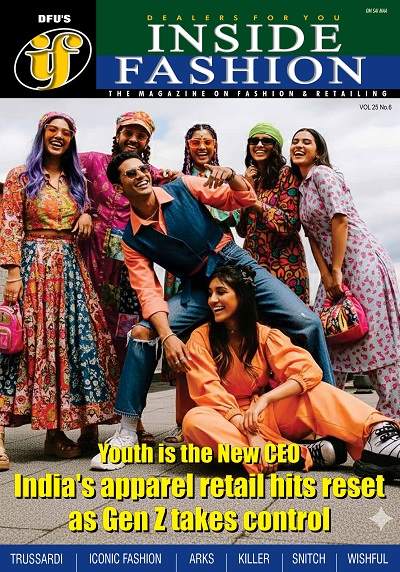From Bazaar to Barcode: How India’s middle class is formalizing a $240 bn market

10 November 2025, Mumbai
A new era of consumption is redefining the contours of retail, fashion, and everyday consumer behaviour across India. Based on insights decoded by Apoorva Mittal from Fireside Ventures and Worldpanel India, India’s middle class, projected to be over 450 million people by 2030 isn’t just consuming more, but consuming differently.
This rising segment is marked by higher disposable income, an expanding aspirational mindset, and unprecedented digital connectivity. The result is a sharp pivot from unbranded and loose goods to branded and organized consumption.
“India’s consumption wave is entering an unprecedented phase,” explains Adarsh Menon, Partner at Fireside Ventures. “The retail landscape is being rewritten by an explosion of channels.” The most transformative change is the move from bazaar to barcode from local, informal markets to packaged, labelled products that carry the promise of consistency, hygiene, and trust.
The bazaar-to-barcode transition
Historically, India’s consumer markets have been dominated by fragmented, unorganized retail especially in food, grocery, and fashion. But the new middle-class playbook is changing that at scale. The table, derived from Fireside Ventures and Worldpanel India data, illustrate this shift.
Table:
Consumption segment Total market size Unorganized/unbranded share Projected trend driver Total Loose Consumption Economy $240 bn N/A Rising income, trust, digital influence Food and Grocery Market (Staples) N/A 41% (Unbranded) Increased branding of flour, pulses, oils Fashion/Apparel Market N/A 56% (Unorganised) Digital influence, shift to organized retail
Source: Fireside Ventures/Worldpanel India, Redseer estimates.
The $240 billion loose consumption economy, a symbol of India’s fragmented retail DNA is now being steadily absorbed into the organized sector.
As consumer awareness of hygiene and authenticity grows, more buyers are moving toward labelled, traceable products. This applies not only to packaged food but increasingly to garments, personal care, and home products.
Apparel evolution from tailor shop to label
Among all sectors, fashion and apparel stands at the most dynamic crossroads of this transformation. Over 56 per cent of the market remains unorganised, dominated by local stores, street vendors, and regional tailors. Yet, this is where the sharpest momentum lies. By 2030, analysts project that the majority of fashion consumption in India will be branded, driven by three structural factors.
Trust and quality: Consumers increasingly associate labels with hygiene, longevity, and authenticity qualities that matter more as disposable income rises.
Digital datalysis: Platforms like YouTube, Instagram, and WhatsApp are democratizing fashion influence, connecting Tier II, III city consumers to national and global styles.
Platform reliability: E-commerce has emerged as the great equalizer, providing transparent return policies, user reviews, and brand accountability that build confidence among first-time online shoppers.
As a result, the apparel market’s future will be determined as much by trust infrastructure as by brand power.
Platforms as the new gatekeepers of trust
One of the most striking findings from the Fireside Ventures analysis is that middle-class Indians often trust the platform more than the brand. In this trust-first ecosystem, Meesho, Purplle, and Rozana have emerged as champions by combining digital distribution with community-led assurance. Their success lies not just in price competitiveness, but in providing familiarity, return options, and local language interfaces that speak directly to Middle India.
Meesho, mapping the Tier II revolution: The meteoric rise of Meesho is a direct case study in how India’s middle class is evolving. Its user data underscores how consumption growth is decisively moving beyond metros.
Table: Meesho’s buyer base
Meesho annual transacting users (FY2025) Data Total annual transacting users 198.8 million Users from non-metro (Tier II and below) 174 million Percentage of users from non-metros 87.5%
Nearly nine out of ten Meesho shoppers are from India’s non-metros. These users are not passive digital adopters they’re active participants driving the next consumption wave. For millions, Meesho isn’t just an e-commerce platform; it’s their first brush with organized retail, digital payments, and product returns. This trust-on-platform model enables smaller D2C brands to access markets that were once unreachable, closing the loop between aspiration and accessibility.
The foundation of this consumption revolution is India’s digital infrastructure, which has made it possible to reach, influence, and serve this massive middle-class cohort efficiently.
Table: India’s digital shift
Metric 2018 2024 Observation Cable TV Households 65 million 38 million Decline of 41%: Linear TV is rapidly losing ground and subscriptions, primarily in urban areas. OTT Viewers 20 million 70 million Growth of 3.5x: Streaming penetration has more than tripled, driven by mobile access and diverse content libraries. Average Daily OTT Viewing 25-30 minutes 80-90 minutes Engagement Tripled: Users are now deeply immersed in digital content, moving from casual use to habitual daily consumption. Average Monthly Mobile Data Use 15 GB 35-40 GB Consumption Multiplied: India has one of the highest data consumption rates globally, fueling a data-rich digital lifestyle. UPI Transactions (monthly avg.) 1 bn 12 bn Adoption Soared 12x: Shows massive, seamless adoption of digital payments, which underpins the monetisation of the entire digital ecosystem (e.g., in-app purchases, subscriptions).
India’s middle class has transitioned from being digitally connected to being digitally conditioned. They make purchasing decisions after watching influencers, reading community reviews, and comparing across platforms often in real-time. Traditional advertising no longer suffices; credibility must be earned through engagement and relatability.
Beyond income the cultural middle class
The Indian middle-class consumption story is no longer defined solely by income it’s also cultural. The emerging consumer is proudly local yet globally aware, comfortable buying regional brands that understand their identity, and simultaneously exploring new lifestyle products discovered online. This new middle-class ethos is reshaping product development, marketing, and even manufacturing strategies. From D2C startups in Indore and Surat to digital-first beauty brands in Bengaluru, India’s consumption base is becoming more distributed, digital, and discerning.
Thus the Rs 240 billion shift underway is more than just a retail phenomenon it represents the formalization of aspiration. As organized, digital, and trust-driven retail expands, the line between rural, semi-urban, and urban consumption will blur further. India’s middle class is no longer a passive segment it’s the engine of national demand, transforming every category from dal to denim.










